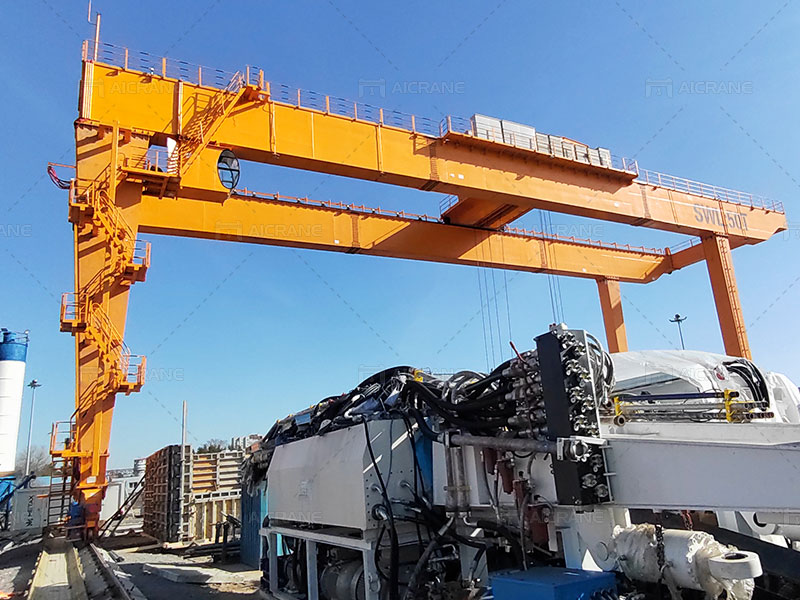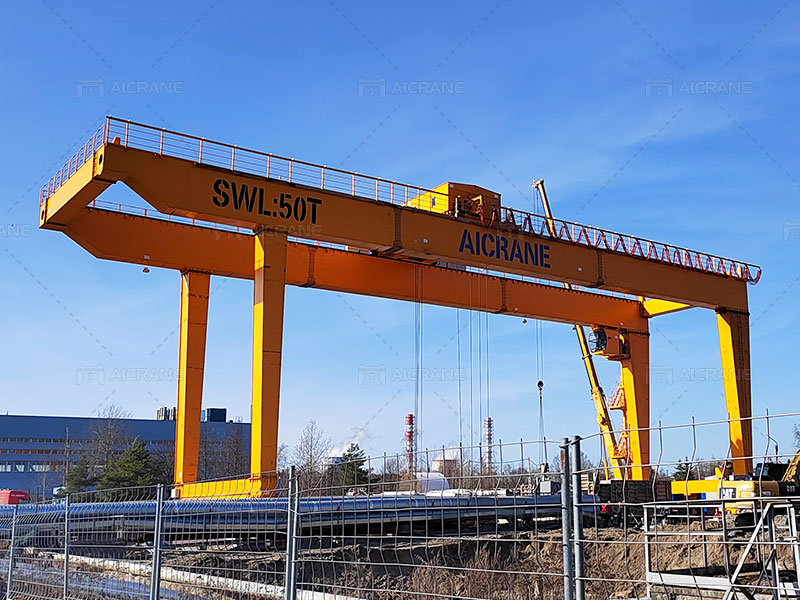Gantry cranes are essential pieces of equipment used in various industries for lifting and moving heavy loads. A 50-ton gantry crane, with its considerable lifting capacity, can be applied across a wide range of industries, from construction and steel mills to ports and shipyards. However, selecting the right components for a gantry crane is crucial to ensure optimal performance, safety, and longevity. Each application has its own unique requirements, meaning that the crane components must be tailored to meet these needs. In this article, we will explore the key considerations and components to consider when choosing a 50 ton gantry crane for specific applications.

1. Understanding the Application
Before diving into the specifics of choosing components, it is essential to have a clear understanding of the intended application. Different industries and tasks demand different features and capabilities from a gantry crane. Some factors to consider when identifying the right crane for a particular application include:
- Lifting Capacity: A 50-ton gantry crane can be used in a variety of applications, including heavy lifting in construction, material handling in warehouses, or even the loading and unloading of containers. Ensure that the crane’s lifting capacity is suited to the load types and weight.
- Lifting Height: The lifting height required for the task must be aligned with the crane’s specifications to ensure that it can lift loads to the required height.
- Work Environment: Whether the crane will be used outdoors, in a steel mill, or in an indoor warehouse affects its design. Weather-resistant components may be necessary for outdoor cranes, while dust and moisture-resistant parts might be needed for industrial settings.
- Frequency of Use: Continuous duty applications require more robust components, while occasional tasks can use less heavy-duty parts. Work duty classification (e.g., A3, A5) helps determine the gantry crane specifications based on operational intensity.
Once these factors are established, you can proceed to selecting the right components.
2. Key Components of a 50-Ton Gantry Crane
2.1. Gantry Frame and Structure
The gantry frame is the main structural component of the crane, providing the foundation for all other components. The frame should be designed with the following in mind:
- Material Selection: High-quality, durable steel such as Q235 or Q345 is typically used for gantry crane frames. For applications requiring additional strength or resistance to harsh environments, materials like stainless steel or alloy steel may be more appropriate.
- Frame Design: The design of the gantry frame can vary depending on the application. For example, a double girder gantry crane offers more stability and lifting capacity than a single girder crane, making it ideal for heavy-duty operations or applications requiring precise control.
- Corrosion Resistance: In environments such as shipyards or steel mills, where exposure to moisture or corrosive materials is common, the gantry frame should be treated for rust and corrosion resistance. Galvanized or painted surfaces can provide added protection.
2.2. Hoist and Lifting Mechanism
The hoist is responsible for lifting and lowering the load. For a 50-ton gantry crane, the hoisting mechanism must be designed to handle the specified weight while ensuring smooth and controlled lifting.
- Hoist Type: There are two main types of hoists: electric and manual. For a 50-ton gantry crane, an electric hoist is typically the preferred choice, as it provides greater efficiency and control compared to manual hoists.
- Motor Power and Speed: The motor should be rated to handle the required lifting capacity. For a 50-ton crane, a powerful motor with a high duty cycle rating (e.g., A5 or A6) should be chosen to ensure reliability under frequent use.
- Lifting Speed: The hoist should provide adjustable lifting speeds to accommodate different load handling needs. In applications where precision is critical (such as in manufacturing or construction), variable speed drives may be preferred for smoother control.

2.3. Trolley and End Trucks
The trolley moves along the gantry crane’s track and facilitates horizontal movement of the hoist. The end trucks are the components that support the crane on its rails, enabling it to traverse the desired distance.
- Trolley Design: Trolleys for a 50-ton gantry crane should be robust and capable of withstanding heavy loads. For high-precision applications, motorized trolleys that can offer variable speeds and greater control are ideal.
- End Truck Specifications: The end trucks must be designed to handle the combined weight of the crane, hoist, and load, ensuring smooth and stable travel. For environments requiring a large span, larger and more powerful end trucks may be necessary.
2.4. Rails and Wheels
The rail system is the backbone of the gantry crane, providing a path for movement. For a 50-ton crane, choosing the right rail and wheel components is crucial for ensuring smooth movement and reducing wear and tear.
- Rail Type: The rails used in a gantry crane should be able to bear the weight of the crane and load without bending or warping. Steel rails are commonly used, but for extremely heavy-duty applications, specialized high-strength rails may be required.
- Wheels and Bearings: The wheels must be able to support the weight of the rail gantry crane and operate smoothly on the rails. For smoother operation and less friction, bearing-mounted wheels are a good choice. Additionally, wheels should be treated to prevent rust and corrosion in outdoor environments.
2.5. Control System
The control system allows operators to manage the crane’s movement, lifting, and other functions. For a 50-ton gantry crane, an advanced control system that ensures precise handling is crucial.
- Control Mode: Cranes can be equipped with various control modes, including ground control, remote control, or cabin control. For most applications, a combination of ground control and remote control is ideal, as it offers flexibility and increased safety.
- Automation: For applications requiring high precision or frequent operation, integrating automation into the crane system can improve efficiency and reduce human error. Features such as anti-sway, load monitoring, and programmable movement can add value, especially in industries like logistics or construction.
2.6. Safety Features
Safety is paramount in heavy lifting operations, especially when handling loads up to 50 tons. The following safety features are essential:
- Limit Switches: These prevent the crane from moving beyond its intended range, reducing the risk of damage to the equipment or load.
- Overload Protection: To prevent damage to the crane and its components, overload sensors should be installed to detect excessive loads and halt operations if necessary.
- Anti-Sway Mechanism: Particularly in high-precision applications, an anti-sway system can help stabilize the load and reduce oscillation during movement.
- Emergency Stops and Alarms: Emergency stop buttons and audible alarms should be installed to ensure quick responses in case of an emergency.
2.7. Power Supply
The power supply must be adequate to handle the demands of a 50-ton gantry crane. In most cases, three-phase power is used, but in specific industries like offshore or marine applications, a diesel or hybrid power supply may be necessary.
- Voltage Requirements: Ensure that the crane’s electrical components match the voltage and power supply in your facility.
- Power Backup: For continuous-duty operations, a backup power system, such as a UPS (Uninterruptible Power Supply), can be useful to ensure operations are not interrupted in case of power failure.
3. Final Considerations
Choosing the right components for a 50-ton gantry crane depends on understanding the specific application and work environment. It’s important to consult with crane manufacturers and engineers who can provide expert guidance based on your needs. They can help you select components that not only meet load and safety requirements but also ensure long-term efficiency and durability.
Factors such as load capacity, lifting height, frequency of use, and work environment all play a significant role in choosing the appropriate gantry crane components. Whether you’re working in construction, steel mills, shipyards, or logistics, selecting the right components tailored to your application will ensure your crane operates at its best, helping you achieve safer, more efficient lifting operations.
